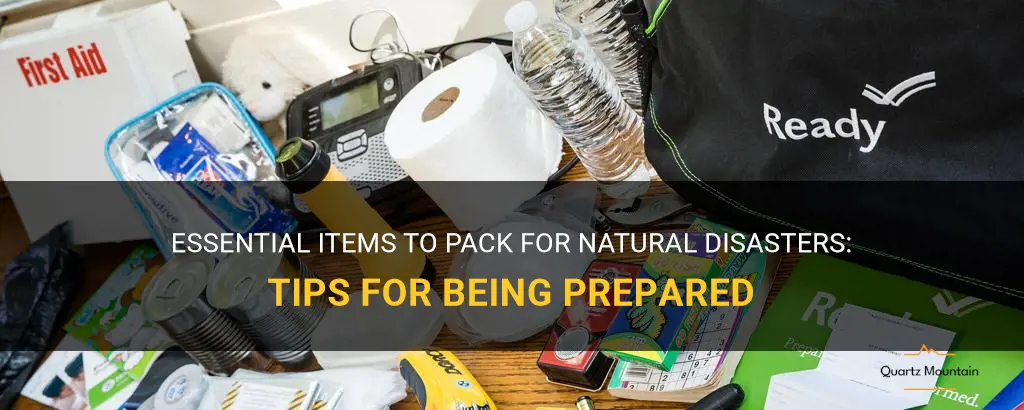
Natural disasters can strike at any moment, leaving individuals and communities displaced and vulnerable. In times of chaos and uncertainty, being prepared is crucial, and having essential items packed and ready can make all the difference. From emergency food and water supplies to first aid kits and communication devices, knowing what to pack for a natural disaster can be a lifesaver. In this article, we will provide you with tips and insights on how to pack these essential items to ensure you are prepared for any emergency situation that may come your way.
What You'll Learn
- What essential items should be included in a disaster preparedness kit?
- How much food and water should I pack in case of a natural disaster?
- Are there specific items I should pack for different types of natural disasters, such as earthquakes or hurricanes?
- Should I include any specific medical supplies or medications in my disaster preparedness kit?
- How often should I check and update my disaster preparedness kit?

What essential items should be included in a disaster preparedness kit?
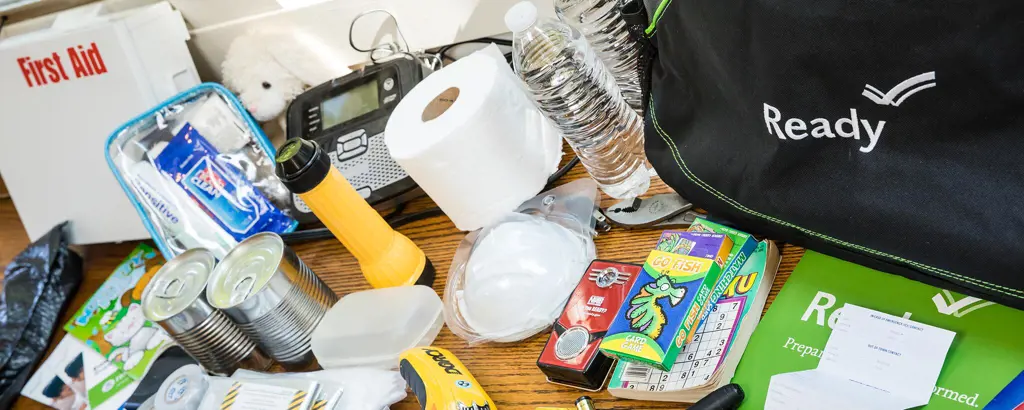
Disaster Preparedness: Essential Items to Include in Your Kit
In the face of a natural disaster or emergency situation, being prepared can make all the difference. Having a well-stocked disaster preparedness kit can help ensure the safety and well-being of you and your loved ones. While the specific items may vary depending on your location and individual needs, there are a few essential items that should be included in every disaster preparedness kit.
Water is perhaps the most important item to have in your kit. It is recommended to have at least one gallon of water per person per day for at least three days. Water is crucial for hydration, cooking, and sanitation purposes. Remember to also include a portable water filtration system or water purification tablets, in case your supply runs out or becomes contaminated.
Non-perishable food items are also essential. Choose items that are easy to prepare and have a long shelf life. Canned goods, dry fruits, and protein bars are great options. Don't forget to include a manual can opener and utensils for eating.
A first aid kit is another must-have item. It should include basic medical supplies like adhesive bandages, gauze, antiseptic wipes, pain relievers, and any necessary prescription medications. A first aid manual or guidebook can also come in handy.
Emergency lighting is crucial during power outages. Include flashlights, extra batteries, and glow sticks in your kit. Candles and matches can also provide light, but use caution and keep them away from flammable materials.
A battery-powered or hand-cranked radio is essential for staying informed during a disaster. It can help you stay updated on the latest news, weather conditions, and evacuation instructions. Include extra batteries or a hand-crank charger for the radio.
Personal hygiene items are often overlooked but are important for maintaining cleanliness and preventing the spread of disease. Include items such as toilet paper, hand sanitizer, wet wipes, and feminine hygiene products, if applicable.
A multi-purpose tool can be invaluable in a disaster situation. It should include items like a knife, pliers, screwdriver, and can opener. This tool can help with various tasks such as opening food cans, cutting ropes, or repairing equipment.
It's also crucial to have copies of important documents in your kit. Keep copies of identification, insurance policies, medical records, and contact information for family members or emergency services. Consider storing them in a waterproof and portable container.
Extra clothing and blankets can provide comfort and protection in extreme weather conditions. Include warm clothes, rain gear, and sturdy shoes. Also, consider packing emergency blankets or sleeping bags that are designed to retain body heat.
Lastly, have some cash on hand. In a disaster situation, ATMs and credit card machines may not be functioning properly. Having some cash can help you purchase supplies or seek assistance if needed.
Remember to periodically check and update your disaster preparedness kit. Replace expired items, update documentation, and adjust the kit according to changing needs and circumstances.
Being prepared for a disaster can help alleviate stress and potentially save lives. By including these essential items in your disaster preparedness kit, you are taking an important step towards ensuring the safety and well-being of yourself and your loved ones in times of emergency.
Essential Items to Pack for UEL Students
You may want to see also

How much food and water should I pack in case of a natural disaster?
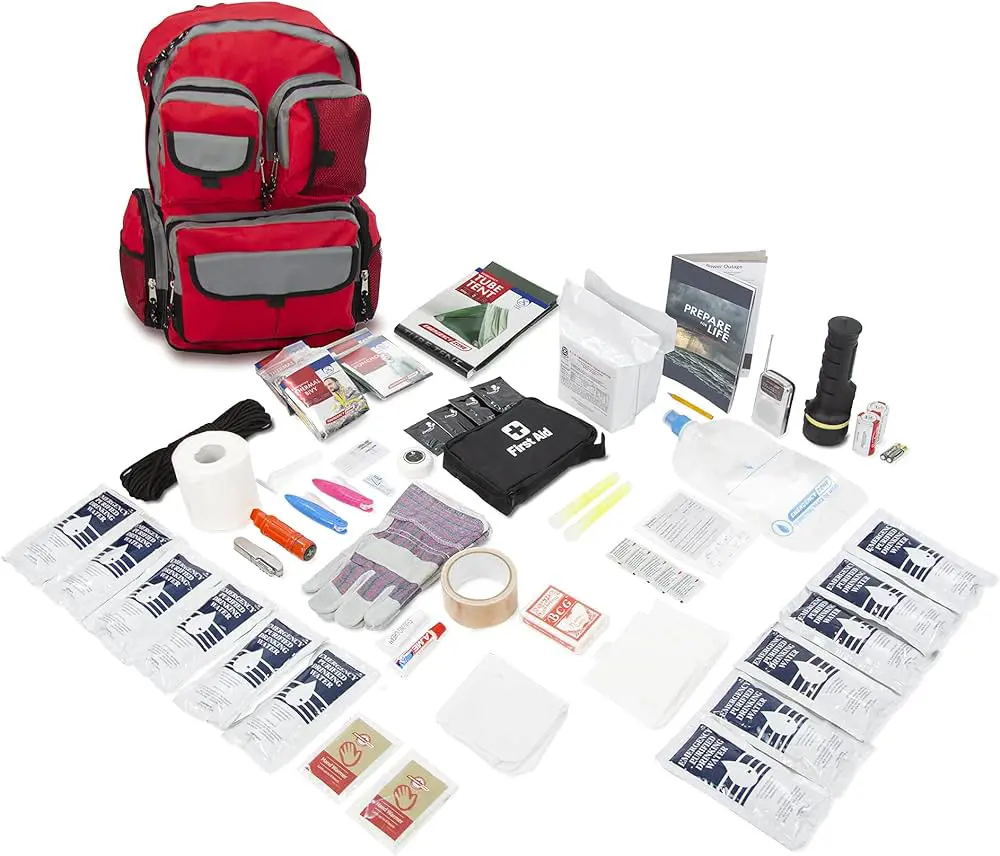
When preparing for a natural disaster, it is important to have enough food and water stocked up to sustain yourself and your family during an emergency situation. The amount of food and water you should pack will depend on various factors, such as the size of your family, the duration of the disaster, and the climate in your area.
The general rule of thumb is to have at least a three-day supply of non-perishable food and water per person. This means that for a family of four, you should have enough food and water to last for twelve days. However, it is often recommended to have a two-week supply, especially if you live in an area prone to severe storms or other long-lasting disasters.
When it comes to food, choose items that are easy to prepare and do not require refrigeration. Canned goods, such as tuna, beans, and vegetables, are good options as they have a long shelf life. Other non-perishable items like rice, pasta, peanut butter, and crackers are also suitable. Aim for a balanced diet by including a mix of protein, carbohydrates, and vitamins in your food stockpile.
As for water, it is crucial to have enough to stay hydrated and meet your basic needs. The general recommendation is to have one gallon of water per person per day. This amount includes water for drinking, cooking, and personal hygiene. For a family of four, this means packing at least 48 gallons of water for a two-week period.
It is worth noting that these recommendations are just a starting point. Depending on the circumstances, you may need to adjust the quantities accordingly. If you have infants or elderly family members, you might need more supplies. Additionally, if you live in a hot or arid climate, you should increase the amount of water you pack to account for higher perspiration rates.
In addition to food and water, you should also include other essential items in your emergency kit. These items may include a first aid kit, flashlights, batteries, a battery-powered radio, a can opener, and any necessary medications. It is also advisable to pack some cash and important documents in case you need to evacuate.
Remember to regularly check the expiration dates on your food and water supplies and rotate them out as necessary. Set a reminder to refresh your stockpile every six months to ensure that your supplies remain viable.
In conclusion, it is essential to be prepared for natural disasters by having an adequate supply of food and water. Aim for a three-day supply as a minimum, but consider extending it to two weeks for added security. Choose non-perishable food items and pack at least one gallon of water per person per day. Adjust these quantities based on your family's needs and the climate in your area. Don't forget to include other essential items in your emergency kit and regularly check and refresh your supplies. By being prepared, you can increase your chances of staying safe and comfortable during a natural disaster.
Essential Items to Pack for a Memorable Rave Experience
You may want to see also

Are there specific items I should pack for different types of natural disasters, such as earthquakes or hurricanes?
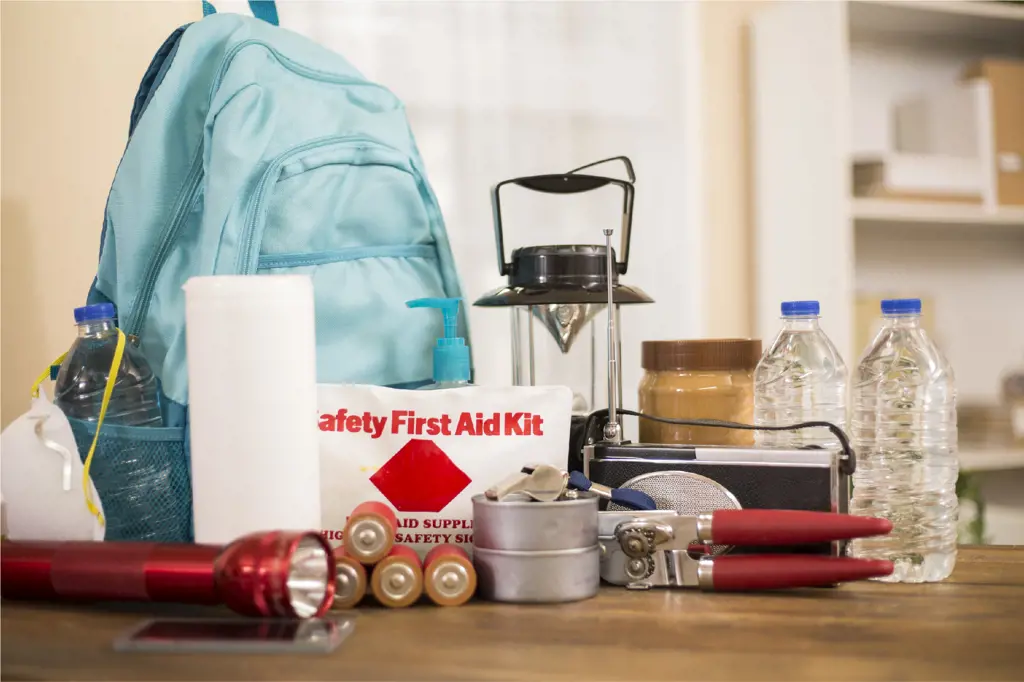
When it comes to preparing for natural disasters, it's important to have a well-stocked emergency kit that will meet your needs during different types of events. While there are some basic items that should be included in any emergency kit, there are also specific items that can be helpful for different types of natural disasters, such as earthquakes or hurricanes.
For earthquakes, one of the most important items to have is a sturdy pair of shoes and a hard hat. During an earthquake, there is a risk of falling debris, so having protective footwear and headgear can help minimize the risk of injury. Additionally, it's important to have a supply of food and water that can last for at least 72 hours, as well as a flashlight and extra batteries for emergencies that may occur during power outages. A first aid kit, including any necessary medications, should also be included in your earthquake preparedness kit.
In the case of hurricanes, there are a few additional items that should be included in your emergency kit. One of the most important items is a supply of cash, as during a hurricane power outages can make it difficult to access ATMs or use credit cards. It's also important to have a supply of non-perishable food and water that can last for at least a week, as hurricanes can cause widespread damage and it may take some time for services to be restored. Having a battery-powered or hand-crank radio can also be helpful, as it can provide you with important updates and information during a hurricane.
It's also important to consider the specific needs of your family members when preparing for different natural disasters. For example, if you have infants or young children, you should include diapers, formula, and any necessary medication in your emergency kit. If you have pets, be sure to include food, water, and any necessary pet medications as well.
In addition to these specific items, there are some general items that should be included in any emergency kit. These include a basic tool kit, a whistle to signal for help, a supply of hygiene products, and a list of important phone numbers and contact information. It is also a good idea to keep copies of important documents, such as passports, insurance policies, and birth certificates, in a waterproof container.
It's important to regularly check and update your emergency kit to ensure that all items are in working order and not expired. Additionally, it's a good idea to have multiple emergency kits, one for your home and one for your car, so that you are prepared no matter where you are when a natural disaster occurs.
By having a well-stocked emergency kit that includes specific items for different types of natural disasters, you can help ensure the safety and well-being of yourself and your loved ones during times of crisis.
Essential Items to Pack for an Unforgettable Trip to La Guajira
You may want to see also

Should I include any specific medical supplies or medications in my disaster preparedness kit?
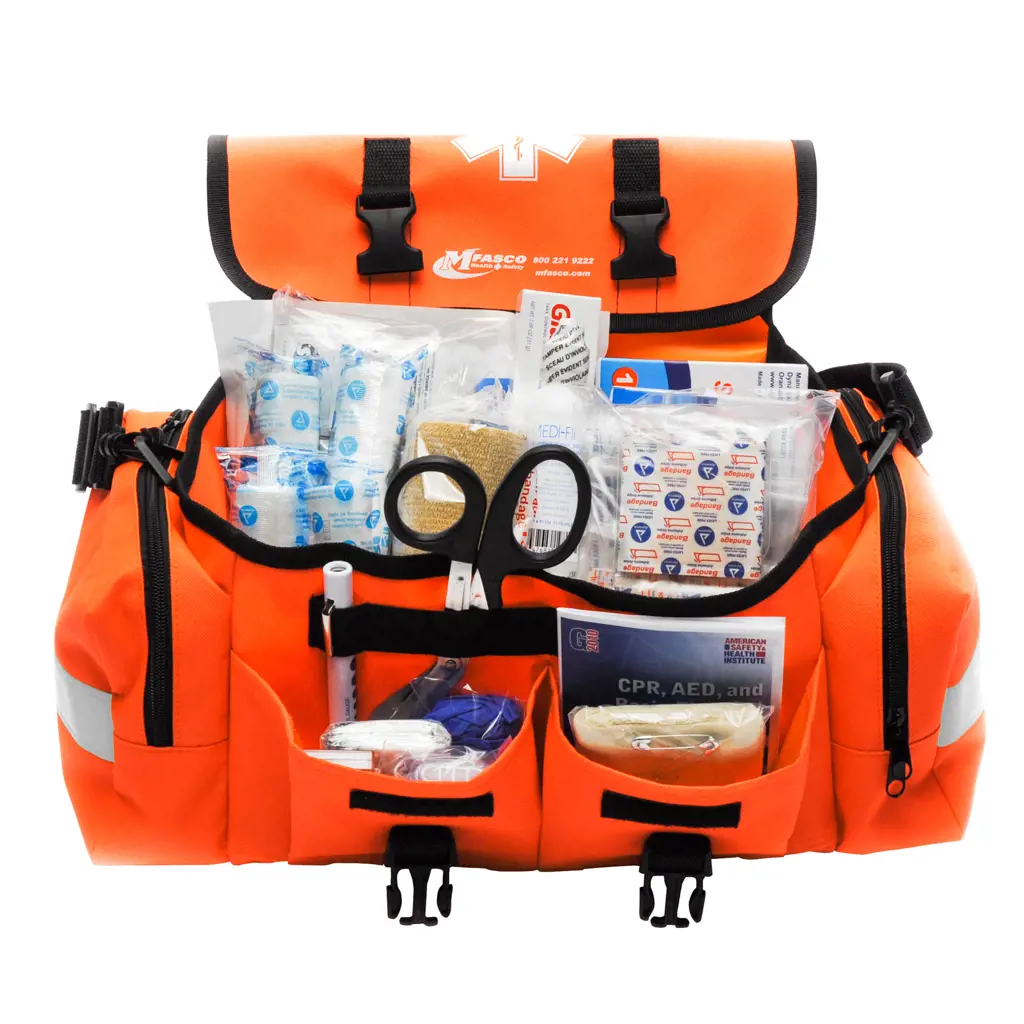
Disaster preparedness is crucial in ensuring the safety and well-being of yourself and your loved ones during emergencies. When assembling your disaster preparedness kit, it is important to include specific medical supplies and medications to address potential health concerns. Here are some guidelines on what to include in your kit:
First Aid Kit:
A well-stocked first aid kit is essential during emergencies. It should include items such as adhesive bandages, sterile gauze pads, adhesive tape, antiseptic wipes, scissors, tweezers, and disposable gloves. These supplies can help address minor injuries and prevent infection.
Prescription Medications:
If you or any family members require prescription medications, it is crucial to include a sufficient supply in your disaster preparedness kit. Make sure to rotate these medications regularly to ensure their effectiveness and check expiration dates frequently. Additionally, consider including a copy of prescriptions and instructions for use.
Over-the-Counter Medications:
Include a variety of over-the-counter medications that can address common ailments. These may include pain relievers, antihistamines, cough and cold remedies, and stomach medication. Keep in mind any specific needs of family members, such as infant pain relievers or medications for chronic conditions.
Medical Equipment:
If you or a family member relies on medical equipment, make sure to include backup supplies in your kit. This may include extra batteries for hearing aids, syringes for insulin injections, spare catheters, or any other necessary equipment.
Personal Protective Equipment (PPE):
In light of the ongoing COVID-19 pandemic, it is crucial to include personal protective equipment in your disaster preparedness kit. This includes items like face masks, gloves, and hand sanitizers. These supplies can help protect against the spread of infectious diseases.
Emergency Contact Information and Medical History:
Include a list of emergency contacts, including your primary care physician, specialists, and any other relevant healthcare providers. Additionally, include a summary of your medical history, allergies, and any pre-existing conditions. This information can be crucial in case of medical emergencies or when seeking medical assistance.
Special Considerations:
Consider any specific needs or conditions that you or your family members may have. For example, if anyone requires regular insulin injections, make sure to include a backup supply along with a cooler to keep it refrigerated. If you or a family member has allergies, include an EpiPen or antihistamines. It is important to address individual needs to ensure everyone's safety and well-being during a disaster.
Remember to periodically review and update your disaster preparedness kit to ensure that all supplies are present and up to date. Check expiration dates on medications and replace any expired items. Additionally, consider including a manual or guide on basic first aid procedures in case professional medical help is not readily available.
In summary, a well-prepared disaster kit should include a first aid kit, prescription and over-the-counter medications, medical equipment, personal protective equipment, emergency contact information, and any special considerations based on individual needs. Taking the time to assemble a comprehensive medical supply kit can help in addressing health concerns during emergencies and ensure the safety and well-being of your family.
Essential Packing List for a Trip to Bologna, Italy with Sais Europe
You may want to see also

How often should I check and update my disaster preparedness kit?
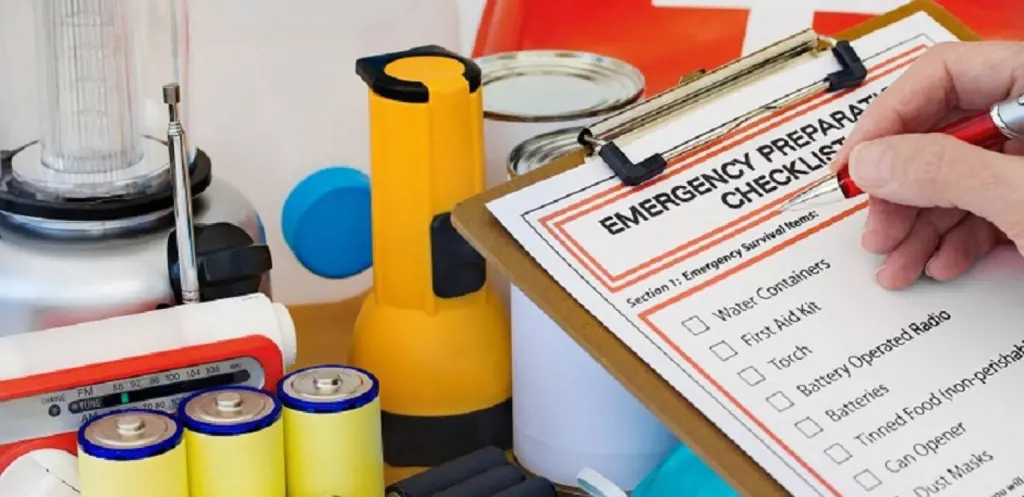
Having a disaster preparedness kit is crucial in ensuring your safety and survival during emergencies. However, it is not enough to simply put together a kit and forget about it. Regularly checking and updating your disaster preparedness kit is essential to ensure its effectiveness and to adapt to changing circumstances.
There are several factors to consider when determining how often you should check and update your disaster preparedness kit. These include the expiration dates of items in your kit, changes in your personal needs, and updates to emergency preparedness guidelines.
One important aspect to consider is the expiration dates of the items in your kit. Many items such as batteries, food, water, and medication have expiration dates. It is important to regularly check these dates and replace any expired items. This will ensure that the items in your kit are in good working condition and will be effective when needed.
Another factor to consider is changes in your personal needs. Over time, your circumstances may change, and you might need to update your disaster preparedness kit accordingly. For example, if you have a new family member or a pet, you will need to include extra food and supplies for them. Additionally, if you have moved to a new area, you may need to update your kit to include items specific to your new location, such as maps, local emergency contact information, and unique environmental hazards.
It is also important to stay informed about updates to emergency preparedness guidelines. Government agencies and organizations often provide updated guidelines on disaster preparedness. These guidelines may include new recommendations for the types of items to include in your kit or changes to evacuation plans. By regularly checking for updates, you can ensure that your kit is in line with the most current recommendations and best practices.
In terms of how often you should check and update your disaster preparedness kit, it is generally recommended to perform checks at least once a year. However, it is a good idea to check your kit more frequently, especially for items with shorter expiration dates. For example, you might want to check your kit every six months to ensure that your food, water, and medication are up to date.
To make the process of checking and updating your disaster preparedness kit easier, it can be helpful to create a checklist. This will allow you to systematically go through each item in your kit and ensure that everything is in good condition and up to date. Additionally, consider keeping a record of the dates when you last checked and updated your kit, as this will help you stay organized and ensure that you are maintaining your kit regularly.
In conclusion, regularly checking and updating your disaster preparedness kit is essential to ensure its effectiveness and to adapt to changing circumstances. Consider factors such as expiration dates, changes in personal needs, and updates to emergency preparedness guidelines when determining how often to check and update your kit. By staying proactive and keeping your kit up to date, you will be better prepared to face any emergency or disaster that may arise.
Essential Items to Pack for Your Busabout Adventure
You may want to see also
Frequently asked questions
When preparing for a natural disaster, it is important to have a well-stocked emergency kit. This should include essential items such as non-perishable food, water, flashlights, batteries, a first aid kit, a multi-tool, a battery-powered or hand-crank radio, extra prescription medications, personal hygiene items, and copies of important documents. Additionally, it is important to pack extra clothing, blankets or sleeping bags, and any necessary supplies for children or pets.
It is recommended to have at least one gallon of water per person per day for a minimum of three days. This includes water for drinking, cooking, and hygiene purposes. It is important to take into account the needs of all family members, including children and pets, when calculating how much water to pack. It is also a good idea to have water purification tablets or a portable water filter in case you need to purify water from an alternative source.
Yes, it is a good idea to pack some cash in case of a natural disaster. In the event of power outages or damage to infrastructure, electronic forms of payment may not be available. Having some cash on hand can be useful for purchasing essential items, such as food, water, or gas, if needed. It is recommended to have a variety of small bills and coins in case you need to make smaller purchases or can't receive change.
While it is important to prioritize practical and essential items when packing for a natural disaster, it can also be comforting to have a few sentimental or irreplaceable items with you. This could include family photos, important documents, or small mementos that hold emotional value. It is important to consider the space and weight limitations of your emergency kit when making these decisions and balance the need for practicality with the desire for sentimental items.







